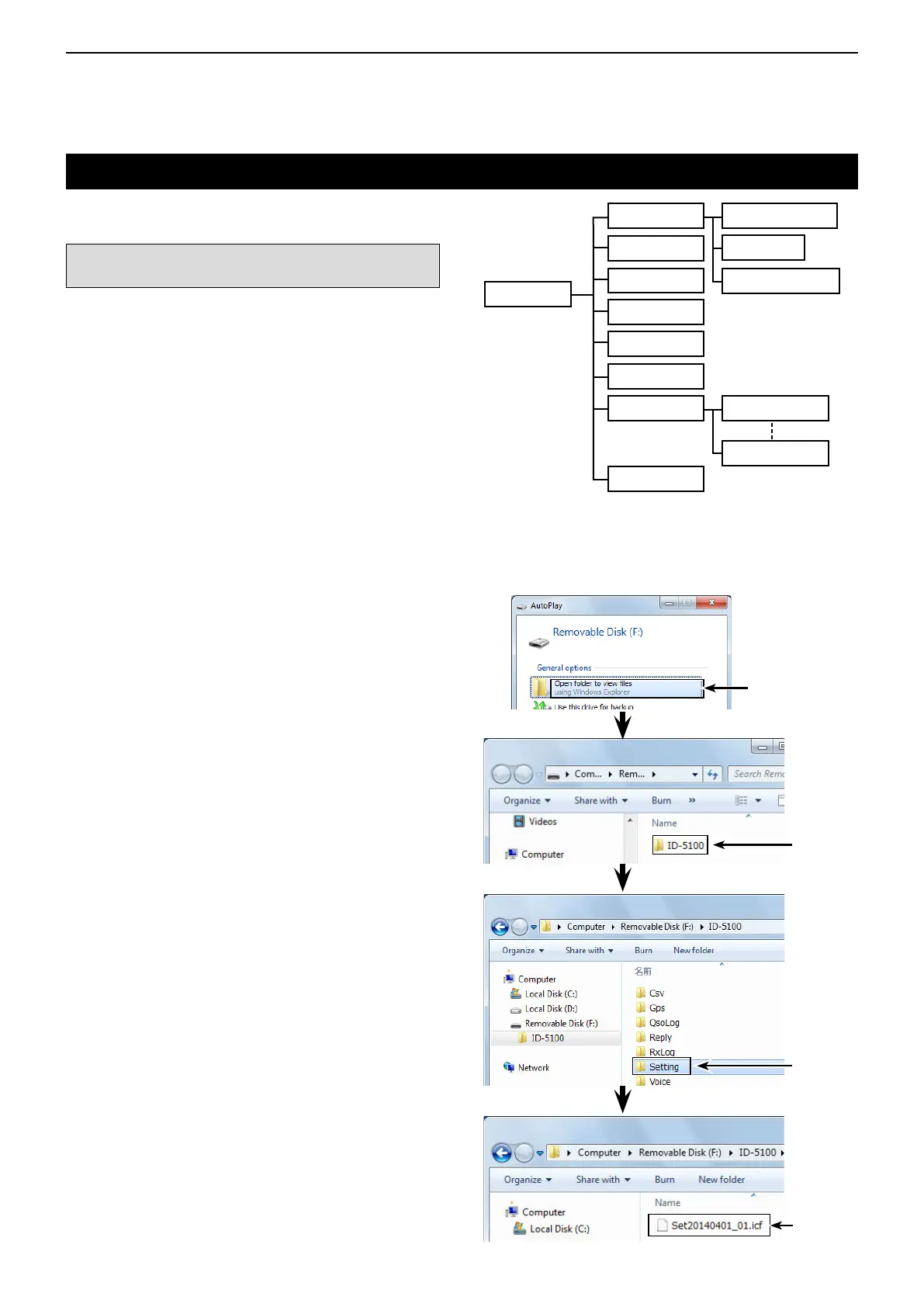9
USING AN SD CARD
9-9
A backup file allows easy restoration, even if the data
on the SD card is accidentally deleted.
If your PC does not have an SD card slot, connect an
external memory card reader to use the SD card.
D AbouttheSDcard’sfoldercontents
The folder in the SD card contains the following:
ID-5100 folder q
Contains the folders created in the ID-5100.
Csv folder w
Contains the GPS Memory, Repeater List and Your
Call Sign Memory folders.
GpsMemory folder e
Stores the Gps Memory in the “csv” format to im-
port.
RptList folder r
Stores the Repeater List in the “csv” format to im-
port.
YourMemory folder t
Stores the Your Call Sign Memory in the “csv” format
to import.
Gps folder y
Stores GPS logging data in the “log” format.
QSOLog folder u
Stores QSO log data in the “csv” format.
Reply folder i
Stores Automatic reply data in the “wav” format.
RxLog folder o
Stores RX record log data in the “csv” format.
!0 Setting folder
Stores the transceiver’s setting data in the “icf” for-
mat.
!1 Voice folder
Creates the recorded QSO audio date folders.
!2 yyyymmdd folder
Stores the recorded audio file in the “wav” format.
The folder name is automatically created in the fol-
lowing format:
yyyymmdd (yyyy:Year, mm:month, dd:day)
!3 VoiceTx folder
Stores the recorded voice audio data for the Voice
TX function in the “wav” format.
Click
Double-
click
Setting
data
(Example:Selectingthesettingdata)
When the SD card is inserted into the SD card slot of your PC
or the SD card reader, the screen appears as shown below.
ID-5100 q
Csv w
Reply i
!0 Setting
!1 Voice !2 yyyymmdd
!2 yyyymmdd
QsoLog u
RxLog o
!3 VoiceTx
BackingupthedatastoredontheSDcardontoaPC
GpsMemory e
Gps y
RptList r
YourMemory t
Double-
click

